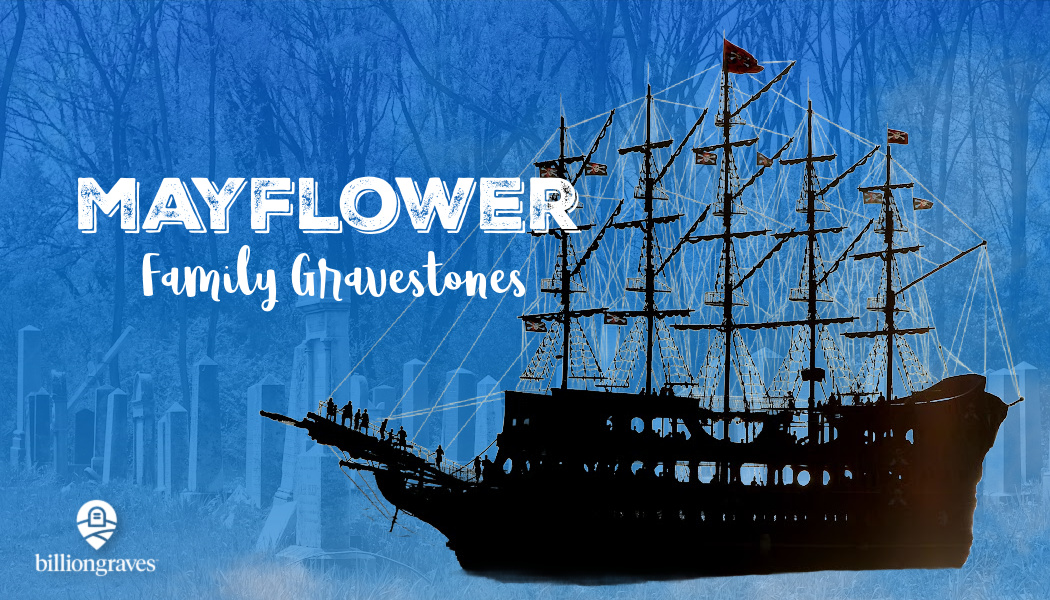Mayflower family gravestones help tell the story of the 102 passengers who set sail for America in the year 1620 with hopes of a better life and a place where they and their children could worship in peace. This was the Mayflower’s first cross-Atlantic trip and it turned into a harrowing 66-day voyage.
Because the voyage took nearly twice as long as anticipated, provisions dwindled and disease set in. Their sea diet, which was high in salt preservatives, weakened their bodies. The lack of fresh fruits and vegetables caused them to contract scurvy. Pneumonia was common due to lack of shelter after they arrived in the new land. Sadly, 53 of the 102 passengers died within months.

Even though more than half of the Pilgrims did not survive the first winter, there are still an estimated 35 million individuals living today who are their direct descendants.
During the Thanksgiving holiday season, many of those descendants ponder the sacrifices those pilgrims made in making the voyage and the day of thanksgiving they celebrated with the Wampanoag People. Their love of God, service to one another, and courage still inspire us generations later.
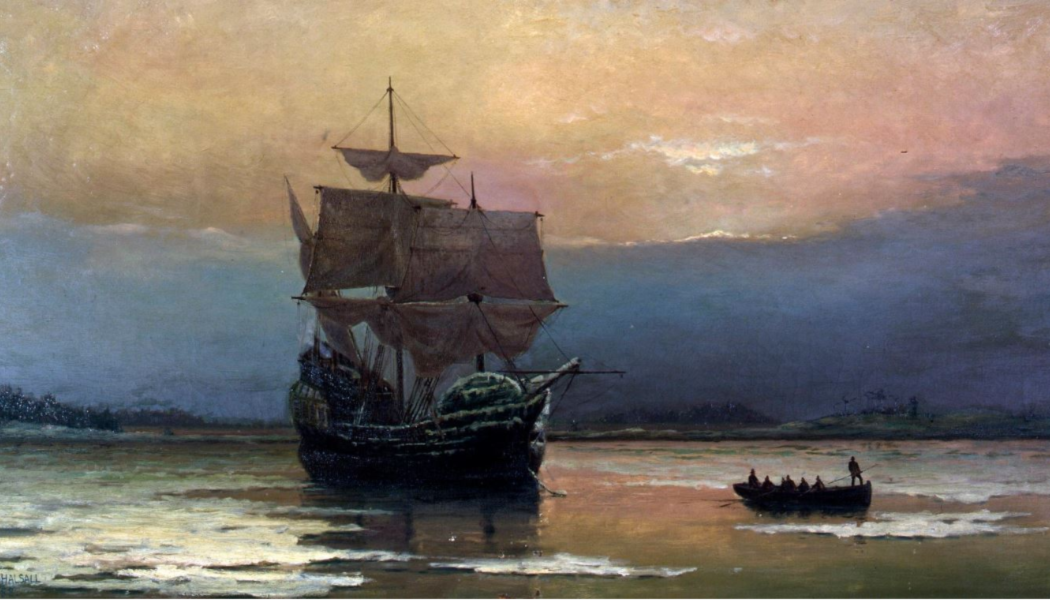
Of the surviving Mayflower passengers, fifty-one are known to have descendants – 36 adults and 15 individuals who were children at the time of the voyage.
Below are the gravestones of some of these passengers – along with stories that helped shape the future of their posterity.
Mayflower Family Gravestone for William and Dorothy Bradford

William Bradford was the governor of Plymouth Colony for about 30 years, between the years of 1621 and 1657. Fortunately for us, he kept a detailed journal during that time.
Bradford wrote of their hopes:
“The great hope, and for the propagating and advancing the gospel of the kingdom of Christ in those remote parts of the world.”

He wrote of their attitude:
“All great and honorable actions are accompanied with great difficulties, and both must be enterprised and overcome with answerable courage.”
He wrote of their adversities:
The Pilgrims felt they had enough provisions to get them through the winter. Bradford rejoiced with the other colonists over their first fall harvest and celebrated with a feast of thanksgiving in the autumn of 1622. but in November the ship Fortune arrived. She carried 35 new settlers but absolutely no provisions – no food, cookware, bedding, or warm clothes.
With the added mouths to feed, they struggled through the winter, with half of the company dying from starvation, exposure, and scurvy. By May, their food supply was gone and the harvest was still four months away.
“By the time our corn is planted,” said Governor William Bradford, “our victuals are spent, not knowing at night where to have a bite in the morning, and have neither bread nor corn for 3 or 4 months together; yet bear our wants with cheerfulness and rest on Providence.”
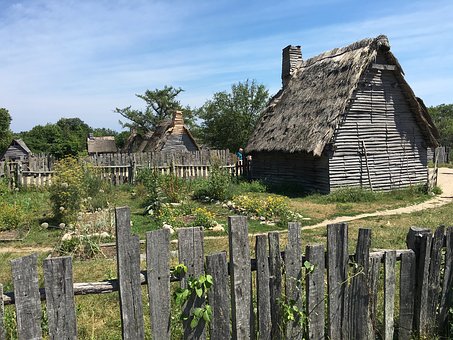
Bradford wrote of gratitude:
“May not and ought not the children of these fathers rightly say: “Our fathers were Englishmen which came over this great ocean and were ready to perish in this wilderness but they cried unto the Lord, and He heard their voice and looked on their adversity. Let them, therefore, praise the Lord, because He is good, and His mercies endure forever.”
Bradford wrote of keeping a long-term perspective:
Bradford encouraged his fellow colonists to see beyond the trials experienced by their tiny group to the thousands that would follow in their footsteps:
“As one small candle may light a thousand, so the light here kindled hath shone unto many, yea in some sort to our whole nation.”

And finally, he wrote his “last will and testament” – of sorts – to his descendants:
“Though I bequeath you no estate, I leave you in the enjoyment of liberty.”


This is an aerial view map of Burial Hill Cemetery in Plymouth, Massachusetts. Each of the markers indicates a spot where a photo has been taken of Bradford gravestones with the BillionGraves app and automatically tagged with GPS coordinates.
William Bradford’s final resting place is marked with the blue pin and the surrounding pins mark other gravestones with the last name of Bradford. (This family plot feature is available with a BillionGraves Plus upgraded subscription. Basic name searches on BillionGraves are free.)
Mayflower Family Gravestone for William and Mary Brewster
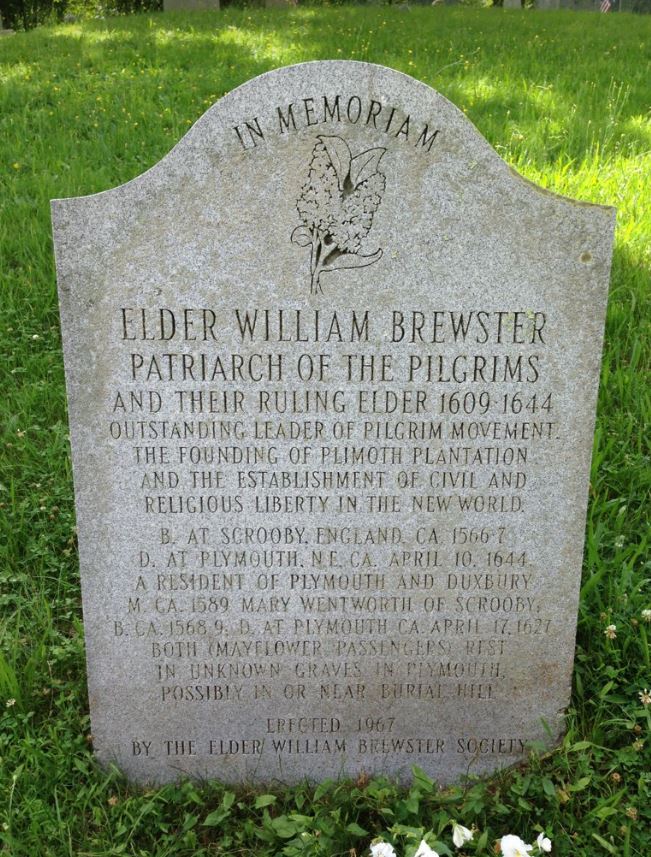
Elder William Brewster and his wife, Mary, sailed on the Mayflower with their two sons, Love and Wrestling. Love was named for “the love of God” and Wrestling for “wrestling with the devil.”
Long before the pilgrims were known as pilgrims, they were called Separatists. This was because they separated themselves from the Church of England in order to follow their hearts in adhering to the teachings of the Bible.
Elder Brewster was the religious leader of the Separatists, and one bold enough to print tracts with his own printing press to share their beliefs with others in England. For this, he was put in jail time and time again.
But undaunted, he continued to preach and to print until the time the Separatists boarded the Mayflower, headed for a land where they could worship in freedom.
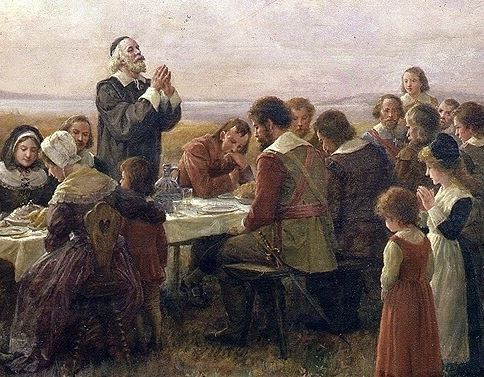
At Brewster’s death in 1643, William Bradford wrote, “My dear and loving friend, Mr. William Brewster, was tender-hearted . . . of such as were in misery. He did the best good he could . . . walking according to the light he saw, ’til the Lord revealed further unto him.”
Bradford continued, noting that Brewster had “done and suffered much for the Lord Jesus . . . in this wilderness, and done faithful service in his place and calling.”
Click HERE to see the gravestone of William Brewster on BillionGraves’ website.
Mayflower Family Gravestone for John and Priscilla Alden

John Alden, a handsome young man, was hired to be the Mayflower company’s cooper – a maker of wooden barrels – and carpenter.
Alden could be remembered for a great many things since he was an assistant to the governor of Plymouth Colony, a company trader, and helped to found the town of Duxbury. He was a deputy, colony treasurer, and sat on several Councils of War.
But Alden is best remembered for his romance and courting of the pretty Priscilla Mullins.
The story was so sweet that it was passed down through the family orally until Alden’s great-great-grandson, Reverend Timothy Alden, wrote it down in 1814.
And so the story goes . . . Captain Myles Standish, the military leader in Plymouth, was made a widower when his wife, Rose, passed away in January of 1621.
Before long, Standish turned his attentions to Priscilla Mullins. According to the custom of the time, he sent a messenger to ask her father for permission to visit his daughter.
John Alden was the chosen messenger and he dutifully communicated the Captain’s wishes.
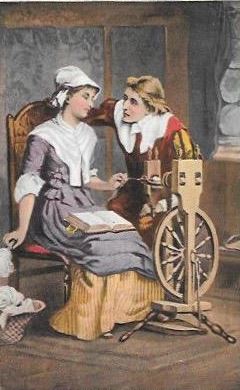
Descendant Timothy Alden wrote, “The old gentleman did not object, as he might have done, on account of the recency of Captain Standish’s bereavement. He said it was perfectly agreeable to him, but the young lady must also be consulted. The damsel was then called into the room, and John Alden, who is said to have been a man of most excellent form, with a fair and ruddy complexion, arose, and, in a very courteous and prepossessing manner, delivered his errand. Miss Mullins listened with respectful attention, and at last, after a considerable pause, fixing her eyes upon him, with an open and pleasant countenance, said: ‘Prithee, John, why do you not speak for yourself?’
“He blushed and bowed and took his leave, but with a look which indicated more than his diffidence would permit him to otherwise express. However, he soon renewed his visit, and it was not long before their nuptials were celebrated in ample form.”

John and Priscilla Alden went on to have a large family of 10 children – and possibly an 11th that died in infancy – plus many, many descendants!
The Alden gravestones were erected by their descendants, who chose to have a skull with wings engraved on them. The skull is a symbol of death and the wings are a symbol of a flight heavenward. So the two together symbolize resurrection.
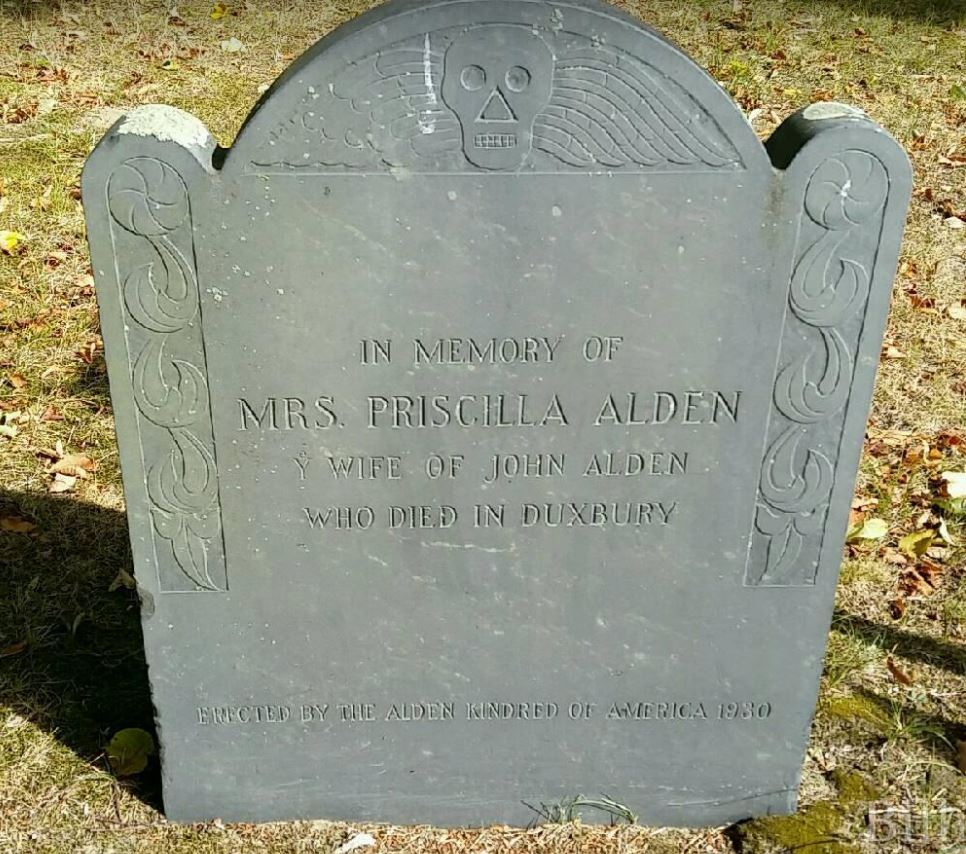
It is somewhat of an irony that John and Priscilla Alden are buried at Myles Standish Burial Ground!
Click HERE to see the gravestone of Priscilla Mullins on BillionGraves’ website.
Click HERE to see the gravestone of John Alden on BillionGraves’ website.
Mayflower Family Gravestones for Myles Standish
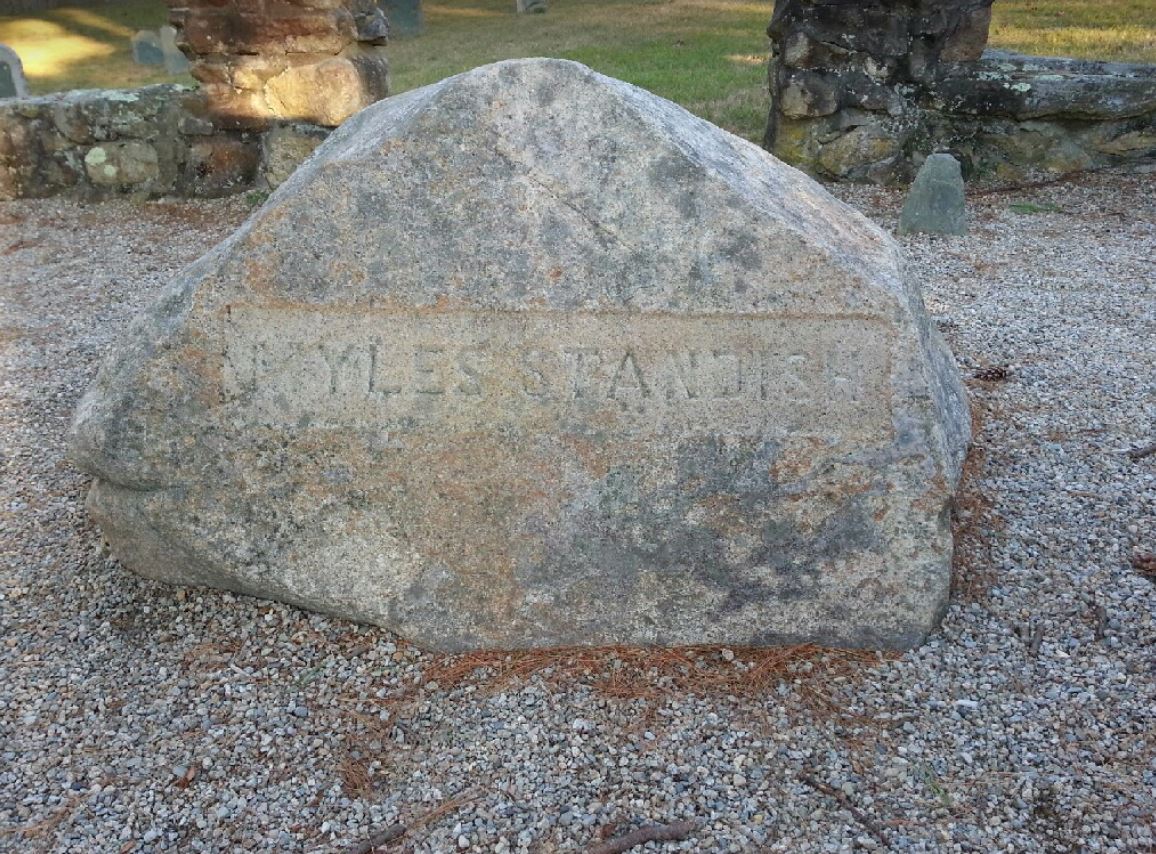
Some legends say that Myles Standish, who was known for his fiery temper, never forgave John Alden for stealing Priscilla’s heart. But this is highly unlikely since the two men later founded the town of Duxbury together.
Following the wedding of John and Priscilla Alden, the ship Anne arrived in July of 1623 at Plymouth Colony with a lady passenger aboard named Barbara. Standish married Barbara right after she arrived, which suggests he may have sent for someone he already knew from the Old World.
Myles and Barbara Standish went on to have 7 children and numerous posterity.
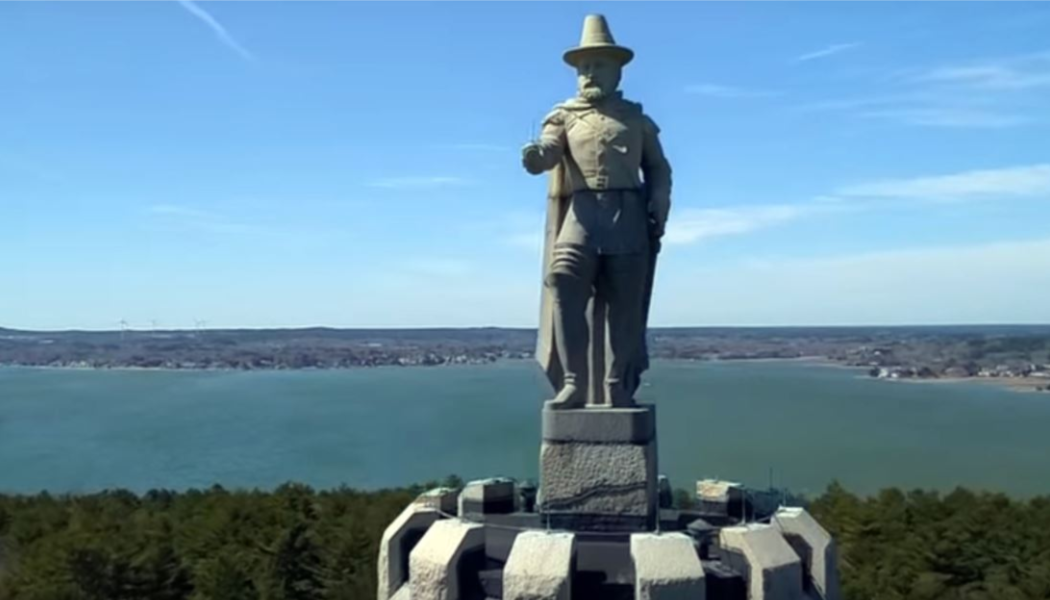
Standish was renown for his protection of Plymouth Colony. He led the militia in the use of pikes and muskets. Under his supervision, a fort was built. But he had a tender side too.
During the Pilgrim’s first winter, when so many were dying, Standish was one of the few people who did not get sick. William Bradford wrote that he was a source of comfort and strength to many who suffered.
Today in Duxbury, Massachusetts, there is a state park named Myles Standish Monument State Reservation. And at the entrance, stands a 116-foot granite tower topped with a statue of Captain Myles Standish.
Mayflower Family Gravestone for 5 Mayflower Passengers who Died before Making Landfall

- William Butten was a young man that came aboard the Mayflower as a servant to Dr. Samuel Fuller’s family. He died just 3 days before land was sighted.
- Since Edward Thomson did not sign the Mayflower Compact, he was probably not an adult yet. He came aboard the Mayflower with William White’s family and was the first passenger to die after the ship had anchored.
- Jasper More was one of four siblings, ages 4 to 8, that came aboard the Mayflower without their parents. Their father, Samuel More, and their mother, Katherine More – who were cousins – had an unhappy arranged marriage. As the children grew up, their father began to notice that they looked more like the neighbor man than himself. After confronting his wife about an extramarital affair, he arranged to send the children away on the Mayflower under the care of prominent families. Jasper was placed with Governor John Carver. Ellen was put in the care of Edward Winslow’s family. While Richard and Mary stayed with William Brewster’s family. All of the children survived the voyage, but Jasper died while the ship was in the Cape Cod harbor. Then the girls, Mary and Ellen died during the first winter. Only Richard survived to adulthood. He married, had children, and became the captain of a ship.
- Governor William Bradford and his wife, Dorothy Bradford, set sail on the Mayflower, leaving their 3-year-old son behind, presumably to have him join them after the settlement was established. Dorothy survived the long ocean voyage, but while William was onshore with an exploration party on December 7th, 1620, she fell off the Mayflower into the freezing Provincetown Harbor and drown.
- James Chilton died on December 8th while the company was still aboard the ship in the harbor. His wife, Mary, died later that winter, but their orphaned 13-year-old daughter survived.
Click HERE to see the gravestone of Myles Standish on BillionGraves’ website.
Mayflower Family Gravestones for John and Elizabeth Howland
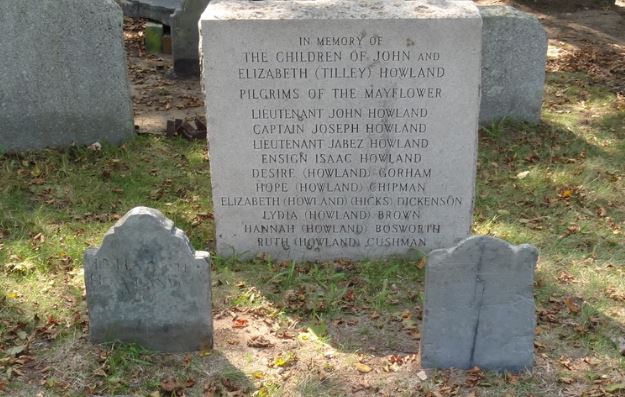
John Howland, came aboard the Mayflower as a manservant of Governor John Carver. But John nearly did not make it to the New World. During a fierce storm, John fell overboard into the raging Atlantic ocean.
As he tumbled into the sea, John grasped a trailing rope and held tight. Sailors then hauled him back onto the ship with boat hooks.
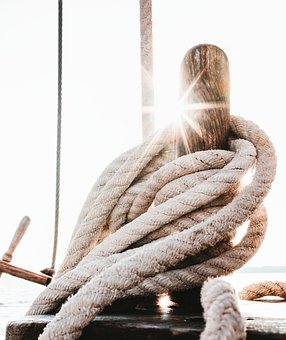
After this miraculous event, Howland went on to marry Elizabeth Tilley in Plymouth. The couple had 10 children, nearly 90 grandchildren, and now more than 2 million descendants!
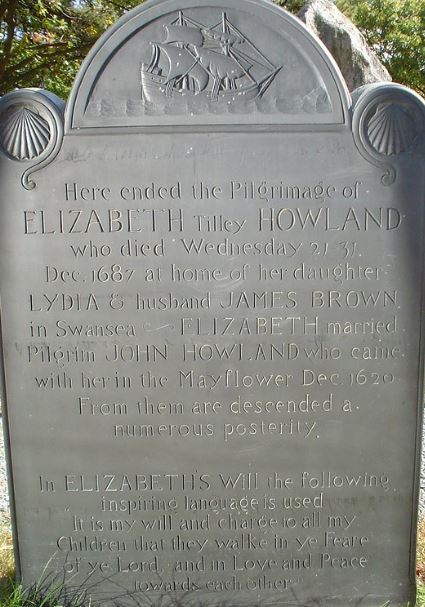
Howland’s descendants include U.S. Presidents Franklin D. Roosevelt, George H. W. Bush, and George W. Bush; poets Ralph Waldo Emerson and Henry Wadsworth Longfellow; and religious leaders Joseph and Hyrum Smith and M. Russell Ballard.
Click HERE to see the gravestone of John Howland on BillionGraves’ website.
What about the Mysterious Mayflower Skeletons?
For decades, during the 18th and 19th centuries, human bones and skulls kept emerging from Cole’s Hill in Plymouth, Massachusetts. The skeletal remains were being accidentally disinterred during rainstorms.
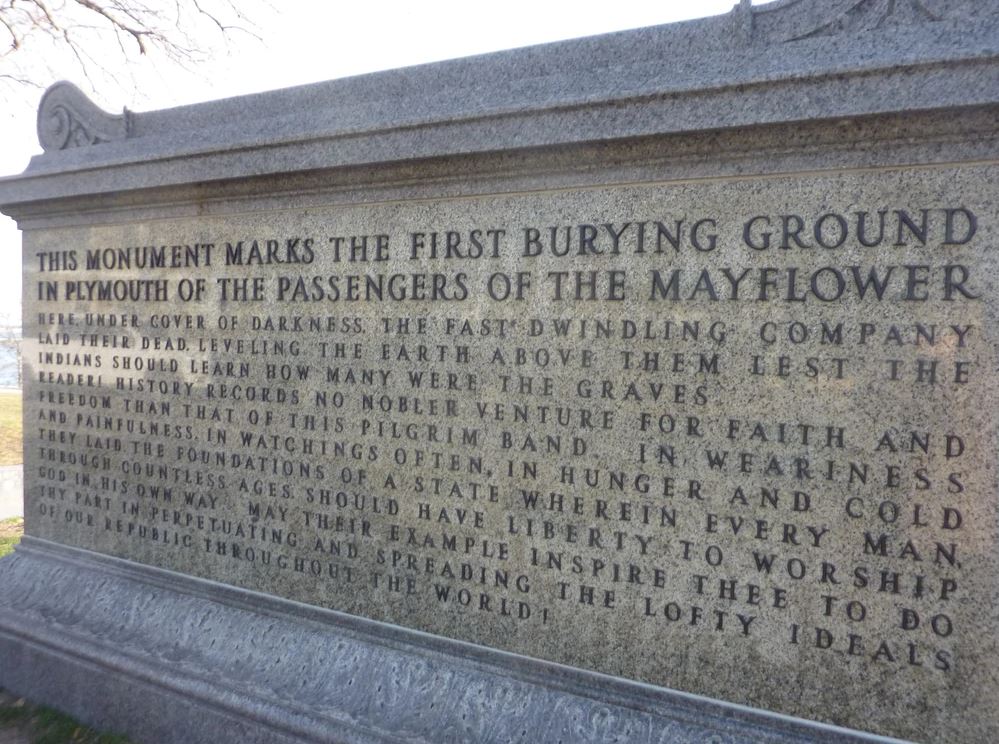
Cole’s Hill was a special place to the colonists since it was likely the first land that they saw from their ship in 1620 after months on the ocean. The hill rises above Plymouth Rock, the traditional landing site of the Mayflower pilgrims.
The pilgrims buried their dead – 53 out of 102 people – in secret at Cole’s Hill so that the Native People would not know how diminished their numbers were becoming that first winter.
So it seems fitting that Cole’s Hill is now the burial site of many of those who died during that first winter. In 1920, the General Society of Mayflower Descendants erected a granite sarcophagus for the reburial of the bones of these Mayflower settlers to honor them.
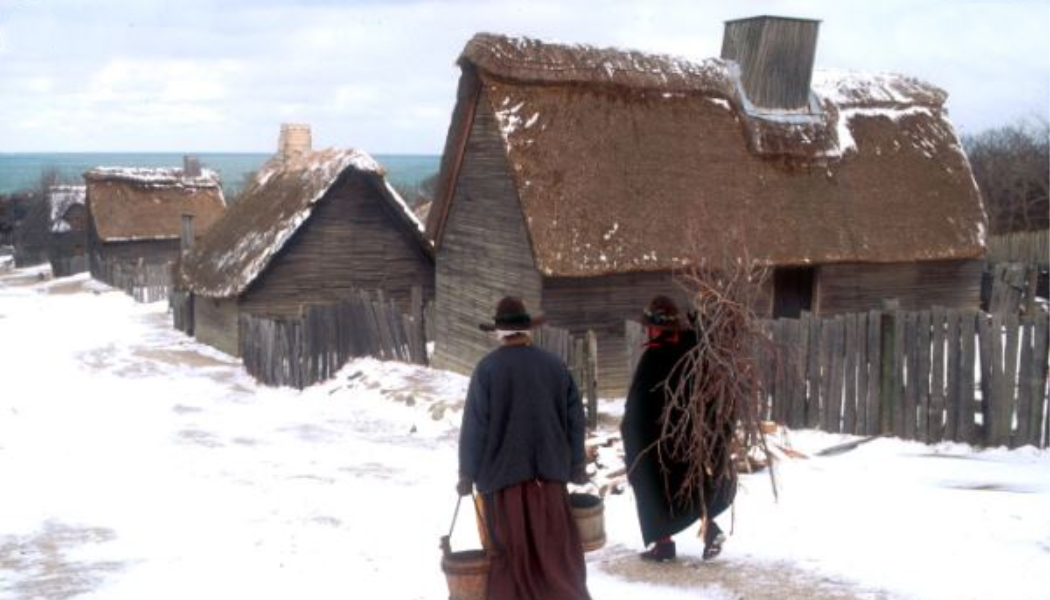
Mayflower Pilgrim Timeline of Events
1620
- September – the Mayflower set sail from England
- November 6-8 – William Button and Ellen More die of illness on board the Mayflower
- November 9 – Mayflower passengers spot land
- November 11 – Mayflower Compact is signed to keep law and order and explorers set foot on land (at present-day Provincetown, Massachusetts)
- Late November – Susanna White gives birth to a son, Peregrine, onboard the Mayflower
- December 4 – Edward Thompson dies aboard the Mayflower
- December 6 – Jasper Moore dies aboard the Mayflower
- December 7 – Dorothy Bradford, wife of William Bradford, falls overboard and drowns
- December 8 – James Chilton dies and his wife dies sometime later
- December 8 – Pilgrim explorers encounter Wampanoag Native People. A skirmish occurs but no one is injured. The pilgrims sail further south and arrive in Cape Cod harbor (present-day Plymouth, Massachusetts) that evening.
- December 20 – Pilgrims choose an abandoned Wampanoag village, called Patuxet, for their new home
- December 21 – Richard Bitteridge dies
- December 24 – Solomon Prower dies
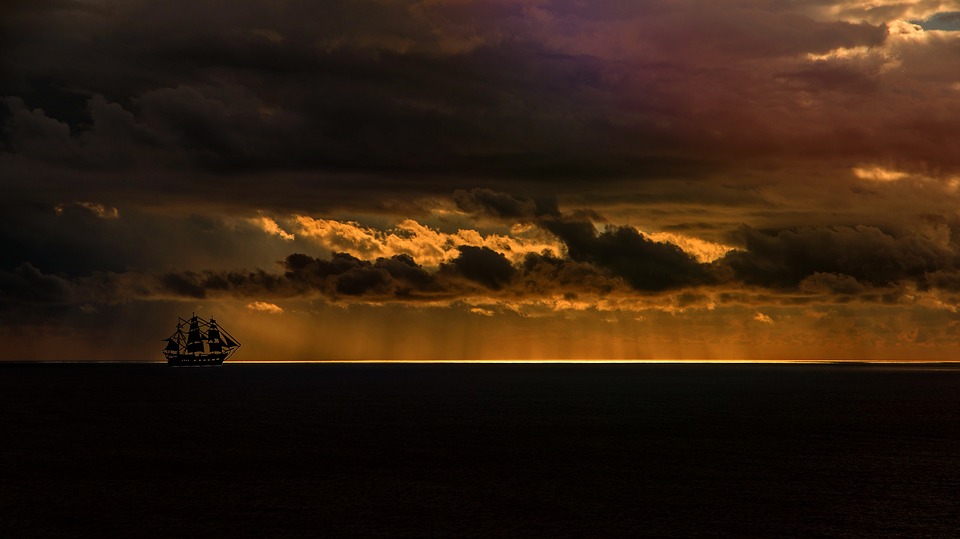
1621
- January 1 -Degory Priest dies
- January 8, Christopher Martin dies
- January 29, Rose Standish, wife of Miles Standish, dies
- February 21, William White dies
- February 21, William Mullins dies
- February 25 -, Mary (Norris) Allerton, wife of Isaac Allerton, dies
- John Allerton, Mayflower crewmen, dies during the winter
- Robert Carter dies during the winter
- Richard Clarke dies during the winter
- Mrs. James Chilton dies during the winter
- John Crackstone dies during the winter
- Sarah Eaton, wife of Francis Eaton, dies during the winter
- Moses Fletcher dies during the winter
- Edward Fuller and his wife die during the winter
- John Goodman dies during the winter
- John Hooke dies during the winter
- William Holbeck dies during the winter
- John Langmore dies during the winter
- Edmund Margesson dies during the winter
- Mary Martin, wife of Christopher Martin, dies during the winter
- Mary More dies during the winter
- Alice Mullins, wife of William Mullins, dies during the winter
- Joseph Mullins, son of William and Alice Mullins, dies during the winter
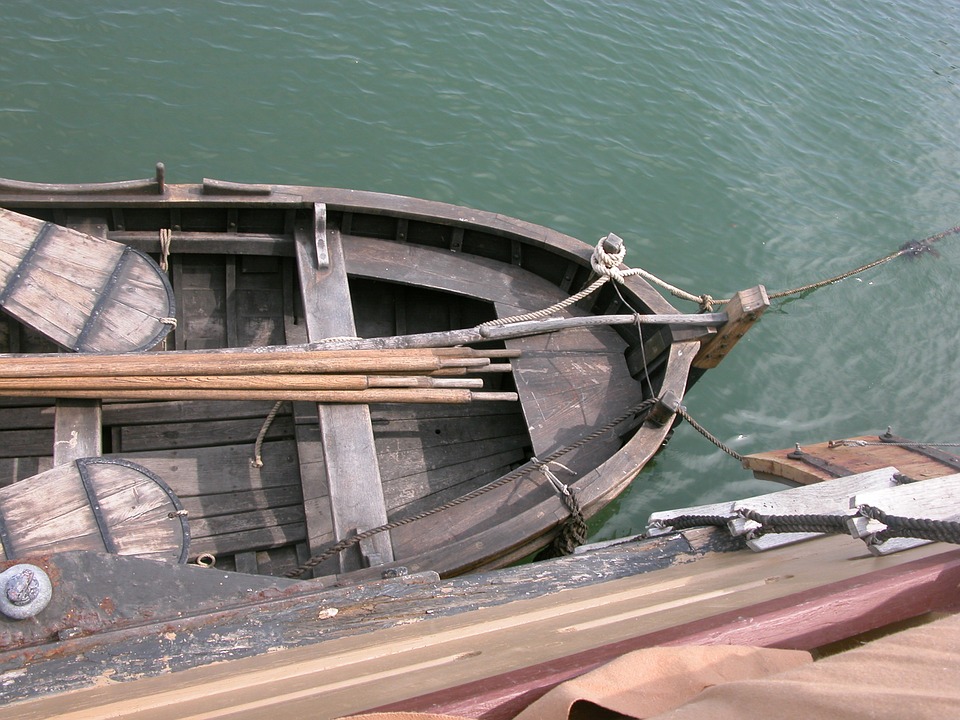
- John Rigsdale and his wife Alice die during the winter
- Thomas Rogers dies during the winter
- Elias Story dies during the winter
- Edward Tilley dies during the winter
- Ann Cooper Tilley, wife of Edward Tilley, dies during the winter
- John Tilley dies during the winter
- Joan Hurst Rogers Tilley, wife of John Tilley, dies during the winter
- Thomas Tinker dies during the winter
- Mrs. Thomas Tinker dies during the winter
- Son of Thomas Tinker dies during the winter
- John Turner dies during the winter
- Both sons of John Turner die during the winter
- Thomas Williams dies during the winter
- Roger Wilder dies during the winter
- Mayflower sailor, Thomas English, dies during that winter or spring before the Mayflower returns to England
- March 24 – Elizabeth (Barker) Winslow, wife of Edward Winslow, dies
- April 1 – Plymouth colonists form an alliance with the Wampanoag Natives
- April 5 – Mayflower departs Plymouth and returns to England
- Mid-April – Governor John Carver dies and William Bradford is elected as the new governor of Plymouth Colony
- Late September or early October 1621 – the pilgrims celebrate their successful harvest with a celebration, now known as the First Thanksgiving
- November 1621 – The ship Fortune arrives with 35 new colonists but no supplies. With new mouths to feed, rations in Plymouth Colony are cut in half. Another difficult winter loomed in the future.
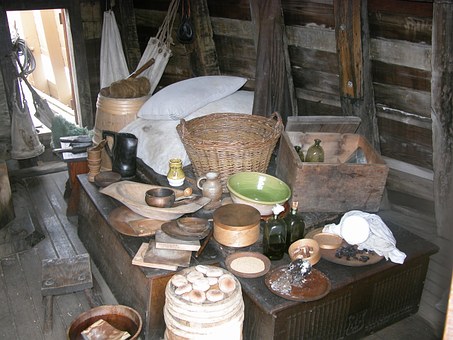
Success!
By 1640, more than 20,000 people and numerous livestock had emigrated from England to the New World, sailing in some 200 ships. By then, the question of whether the colonies would survive had been answered and the fortitude of the early Mayflower arrivals gave more the courage to try.
Some of my own Mayflower ancestors include William and Mary Brewster and John and Priscilla Alden. What about you?
Children can learn more about the Mayflower voyagers on this interactive website from Plimouth Plantation by clicking here.
For more great ideas, go to BillionGraves’ blog post, 10 Ways to Honor Your Ancestors at Thanksgiving.

400th Anniversary of the Mayflower
Next year, in 2020, there will be a celebration of the 400th anniversary of the Mayflower’s arrival in Plymouth Harbor in Massachusetts. It is a tribute to the “Voyage that Made a Nation.”
Anniversary participants will reflect on how the colonists, Native peoples, mariners, and traders established a region rich in culture and forged the way for a new form of government.
In life, they gave us hope, faith, and courage. In death, they left us a legacy to follow.
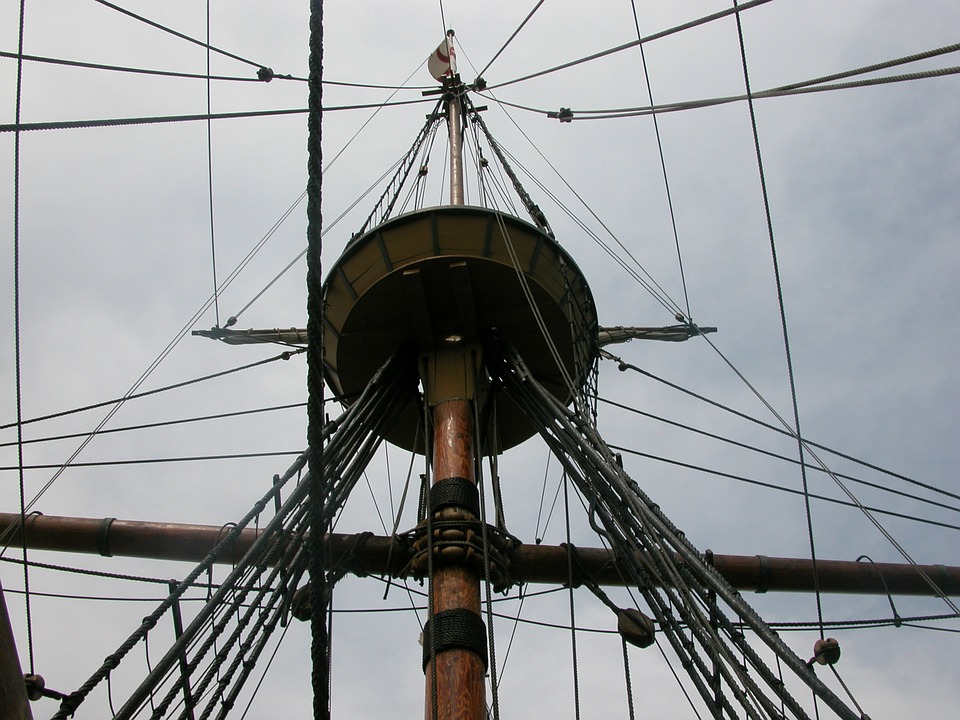
Volunteer
As this anniversary year approaches, you may want to find a way to give back to Mayflower Pilgrims who sacrificed their comfort and risked their lives for their posterity – whether you are one of their descendants or not. A great way to do this would be to document gravestones at your local cemetery with the BillionGraves app which will automatically mark them with GPS locations.
If you would like to take GPS-linked gravestone photos or lead a group project to document a cemetery in your local area, go to BillionGraves.com/Volunteer. If you have questions, email us at Volunteer@BillionGraves.com. We will be happy to help you!
Happy Cemetery Hopping!
Cathy Wallace

